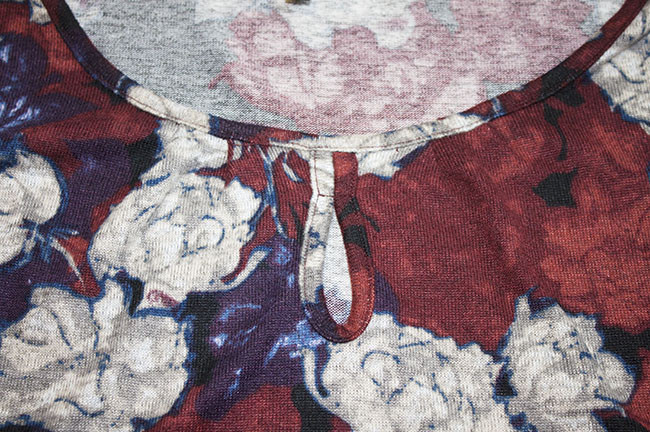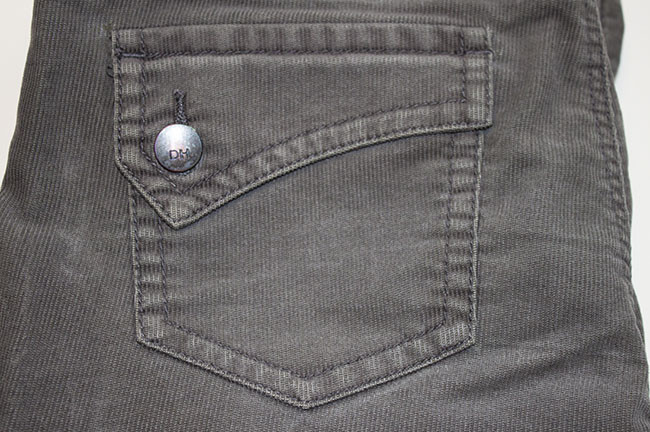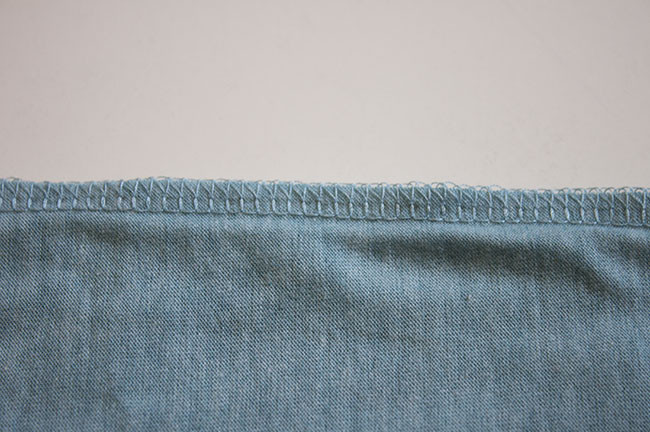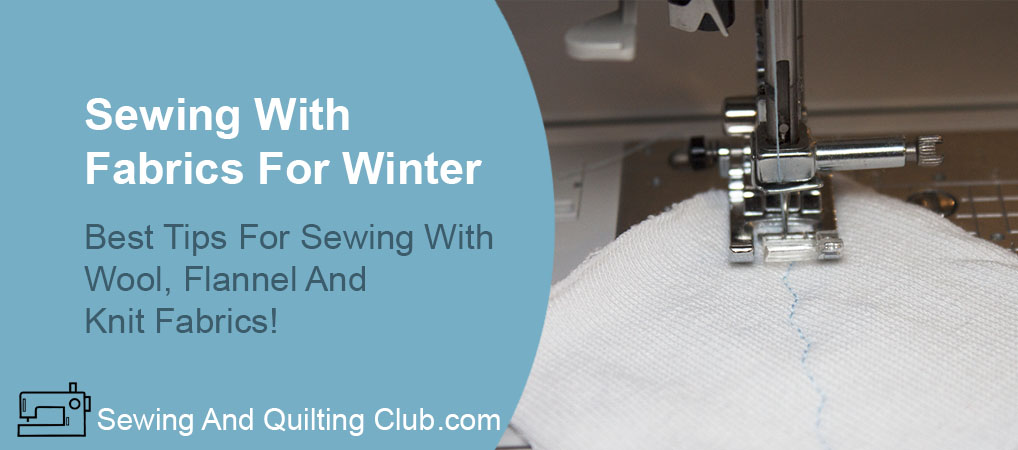Sewing With Fabrics For Winter like flannel, wool, and knits will keep you warm and cozy, learn how to work with them and get a professional finish on your projects.
When you love to sew, you might have some winter projects to make, from a simple scarf or a flannel blanket to make a new winter coat for you or for someone special in your family.
 Fabrics we use to make winter projects like knits, wool or flannel can be thick and can get stretchy at the time we sew with them, learning more about these materials, will give you some tips about how to set up you’re sewing machine and sew on your projects getting professional finishes all the time!
Fabrics we use to make winter projects like knits, wool or flannel can be thick and can get stretchy at the time we sew with them, learning more about these materials, will give you some tips about how to set up you’re sewing machine and sew on your projects getting professional finishes all the time!
Let’s take a look to some Fabrics for Winter projects and a few tips you need to keep in mind when working with these warm and cozy fabrics.
Sewing With Fabrics For Winter
-
Sewing With Flannel
Washing: It’s better to wash flannel with hot water as it will help to shrink it down, then you can place flannel in the dryer. To prevent fraying, you can place the flannel fabric in a lingerie bag, when drying the flannel fabric, you can do it on high heat, it will help to ensure maximum shrinking and it will help also to remove excess lint and fuzz before you start sewing your project.
Ironing: Don’t miss this step as it will help you to prepare flannel to have a perfect finished project made with flannel, when ironing, spray starch on the wrong side of the fabric and use iron on medium heat and iron gently without making too much pressure with the iron, flannel will lay flat on your cutting table, helping you to get perfect pieces to make a perfect project.
How To Prevent Flannel From Fraying: Flannel fabrics are a woven fabric and it will fray easily as you cut your pattern pieces, to prevent flannel from fraying it is better to serge or over lock all the seams. If you don’t have a serger at home, you can do a zigzag stitch on the fabric edge or if you’re sewing machine comes with overcast stitch pattern, it will help you to prevent fraying on flannel fabrics.
Seam Allowance: When working on a project made with flannel is better to have 1/2″ seam allowance. Press seams open to reduce bulk.
Sewing Machine Set Up: When sewing with flannel loose a bit of tension and set up stitching to 3 mm stitch length, as shorter stitches will stretch the flannel.

-
Sewing With Wool
Wool is a great fabric to use when making garments to wear during winter, wool is a natural fiber fabric made from the fleece of sheep, it has many benefits as it retains heat during cold days and keeps heat out during hot days. Projects made with wool can last for many years in good conditions.
When making a project with wool, you don’t need to worry about fraying as cuts are clean.
When sewing a project with wool it will have no stretching or just a little. However, wool is a bulky fabric and it will give you some challenges to work on while you work on this project, always use a good quality thread and appropriate sewing machine needle according to the wool fabric thickness and weight.
When pressing, iron should be just warm and it’s better to use a press cloth. When pressing light colored wool, press cloth should be always white.

-
Sewing With Corduroy
Its velvet texture and vertical ridges make of corduroy a fabric that is ideal to sew some projects for winter, from pants, vest and jackets, you always can be sure this fabric will help you to stay warm during those cold winter days.
As other fabrics that are used to make garments for Winter, corduroy also have some points to keep in mind.
Choose Quality Fabric – In the market you can find corduroy of different quality, it’s always best to buy all-cotton made from a polyester blend.
Choose Simple Patterns To Sew – Corduroy has already vertical ridges that will add that special style garments made with this fabric have, your project made with this material will always look better with simple patterns or shapes.
Think Vertical – Ridges on corduroy are vertical lines and your project will look better is you choose to work on patterns where you can keep ridges vertical.
Avoid Pressing – If you ever have pressed velvet by mistake, you know what can happen, it can happen also when you press corduroy with a hot press, if you need to set seams, you can do it with a warm iron with a pressing cloth and with warm iron.
Reduce Bulk – Corduroy is a thick fabric, when working on a project, avoid having multiple layers or double seams, choose a simple pattern to work with the minimum of seams.
Finish Raw Edges – If you leave unfinished seams, corduroy has a tendency to ravel at the edges, there are a few ways to give seams a professional finish, if you have a serger at home, this will be the simple solution, but if you have not a serger, you can finish the raw edges with the Hong Kong Finish if you’re sewing machine is a straight stitching only machine, but if your machine comes with overcast stitch, run you’re sewing machine with this stitching pattern over all raw edges on your project.
Use A Walking Foot – Because corduroy is a thick fabric, when working on a project that will have thick or multiple seams, you can use a walking foot to help you to get perfect seams on your project.

-
Sewing With Knit Fabrics
Knit fabrics have become popular to make all types of garments for cold weather, you can find knit fabrics in solid colors and also with all type of prints, and this is the reason why this type of fabric is so popular to make many different sewing projects. But if you’re new to sewing (and for some more experienced sewers too) knit fabrics can give any sewer some hard times at the time to work on a project.
Knit fabrics can be made by woven vertical and horizontal threads on a loom or they can be made knitted, and by this means the fabric can be made up of interlocking loops. (if you pull out a thread, it can be pulled out of all the fabric)
When working on a project with a knit fabric, you might need to take your time to know more about what type of knit fabric is the one you’ll be working with, as there are a few different types and knowing what type it is, it will help you to know more about what stitching pattern to set up on you’re sewing machine for that particular project.
Today, I will share some general steps to follow when working on a project with a knit fabric.
You don’t need a special sewing machine to make a project with a knit fabric – I will recommend taking some time to make a run test on a scrap of knit fabric and test your machine before you start sewing any new project. By doing this, it will help you to know if you need to set up your machine for this project (stitch width, stitch length and more or less pressure on the pressing foot)
Sewing With A Serger – Most projects using a knit fabric will be made with a serger, but if at home you don’t have a serger, you can work on your domestic sewing machine and make many different projects with knit fabrics.
Stretch Stitch – If you sewing machine comes with a few different built-in stitches, most probably your machine will have a stretch stitch pattern that can be used for sewing projects with knit fabrics. (Feature Photo)
If your machine doesn’t have a stretch stitch, you can use a zigzag stitch (use a narrow width)
Use The Right Needle – When working on a project with knit fabrics, the best thing is to have in you’re sewing machine a jersey or ballpoint needle, these needles have a dull tip that slides between the fibers of the fabric.
Make A Test Run – When working on a project with knit fabrics, it’s always recommended making a test run, you will know better how the fabric will behave at the time to sew with it and it will help you to set up you’re sewing machine for that particular project.
Walking Foot – If you notice that seams are not sewn evenly, you can use a walking foot to evenly feed the two layers as you sew on.
Tissue Paper – If you don’t have at home a walking foot, a good hack used by more experienced sewers is to use a strip of tissue paper to sew on seams, by doing this it will help to feed evenly the two layers of knit fabric as you sew on. After you finish each seam, you can tear out the tissue paper, it takes more time but you will be amazed on how well it works.
My machine is a small Brother computerized sewing machine, but it helps me to work on any project! You can take a look to a very similar model on Amazon!

Final Thoughts For Sewing With Fabrics For Winter
 When weather starts to get fresher, you might get inspired to work on a project using some fabrics that will help you to stay warmer and cozy.
When weather starts to get fresher, you might get inspired to work on a project using some fabrics that will help you to stay warmer and cozy.
When you’re a beginner, you might notice every fabric will have some challenges for you as you work with them, take your time to know more about each type of fabric for winter projects and make a test run on a piece of each fabric, by doing this, it will help you to know how to set up you’re sewing machine for each project and it will help you to get those professional finishes on all your projects.
Whether you have at home a simple machine or a computerized sewing machine, you always can make all those projects you have on your list. As you keep working on your projects you will know more about you’re sewing machine and how to set it up for every project!
If you have a tip that you know will help more sewers that want to make a project with fabrics for winter, leave it on a comment, we all learn from each other!


Hello; I find Sewing with Fabrics for Winter very interesting and informative. In the article, I learned the different kinds of winter fabrics that I need to remember to source, to prepare for winter when I move to a winter country.
I knew before that there are some very warm fabrics that are suitable for winter, but I could not name them. I am planning to move to the USA as soon as COVID 19 leaves.
Dorcas